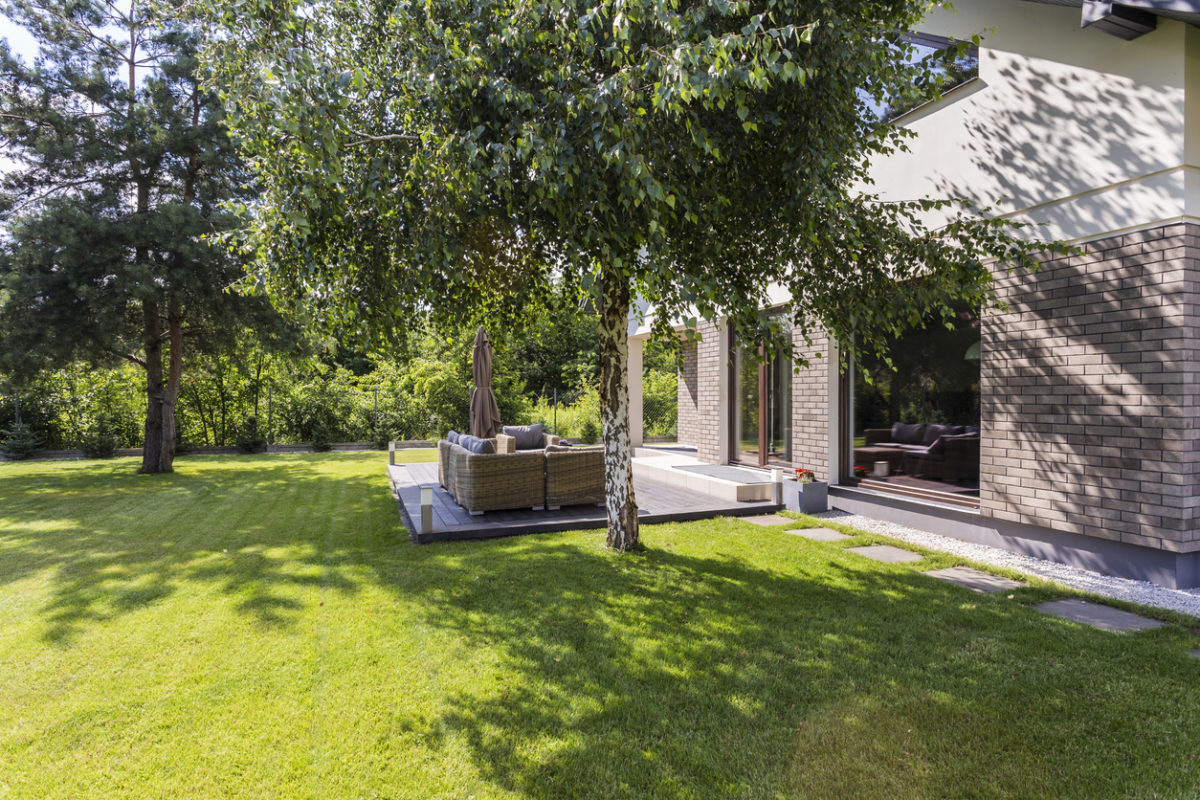
A shade tree can keep your house cool in summer, reducing your energy use and carbon footprint.
April is Earth Month. Each week we are featuring a blog post about steps you can take in your own landscape to help protect our planet. This week’s feature is about helping keep the air clean and the planet cool.
Help keep the air clean: Switch to a battery-powered mower and other garden equipment.
In 2011, gasoline-powered lawn and garden equipment emitted about 26.7 million tons of pollutants, according to research from the US Environmental Protection Agency. This accounts for 24 to 45 percent of all nonroad gasoline emissions. The equipment studied includes mowers, leaf blowers or vacuums, trimmers, edgers and brush cutters.
Two-stroke engines are the main problem. Two-stroke engines burn gasoline less completely than four-stroke engines, so gas mowers and equipment produce a relatively large amount of pollution.
Battery-powered mowers don’t emit harmful air pollution when you use them. They are recharged by plugging them into an electric outlet. In Washington state, about 70 percent of our energy comes from hydroelectric dams. Hydroelectric dams are the cleanest way to generate electricity.
Battery-powered mowers also have the advantage of being quieter. Your neighbors may thank you. And you don’t have the risk of accidental fuel spills, which helps keep our water clean.
Help cool the planet: Plant a tree.
Trees and other plants help with climate change in two ways.
Trees store CO2. This decreases the concentration of CO2 in the atmosphere. An average-size tree can store hundreds of pounds of CO2 over its lifetime. Trees also use CO2 during photosynthesis. In the process, they emit oxygen.
Trees and other plants reduce energy use. Your house will be cooler if a tree shades it from the afternoon sun. You are less likely to use air conditioning. Likewise, neighborhoods with street trees are cooler than those without trees. By reducing energy demand, trees and plants decrease air pollution and greenhouse gas pollutants.
Trees and plants also have other advantages.
- They clean the air. They absorb odors and pollutants and filter particulates out of the air by trapping them on their leaves and bark.
- They reduce runoff and improve water quality by absorbing and filtering rainwater.
- They improve quality of life. Trees and plants provide beauty, habitat for birds and wildlife, and can reduce noise.
Read more from Tree People about the many benefits of trees.
Other steps you can take
While the In Harmony blog focuses primarily on the yard and garden, there are many other things you can do for Earth Month. If you are concerned about climate change, take steps to reduce your carbon footprint. You can take action on the road and in your home and office.
According to a recent opinion piece in the New York Times, the biggest impact would be to drive a fuel-efficient vehicle. The authors’ research found that if vehicles averaged 31 miles per gallon, the United States could reduce its carbon dioxide emissions by 5 percent.
Another New York Times article names several actions to combat climate change, such as eating less red meat, taking the bus, not wasting food and buying less stuff.
And this list from the US Environmental Protection Agency also has a broad set of actions.
Let’s make every month Earth Month.
